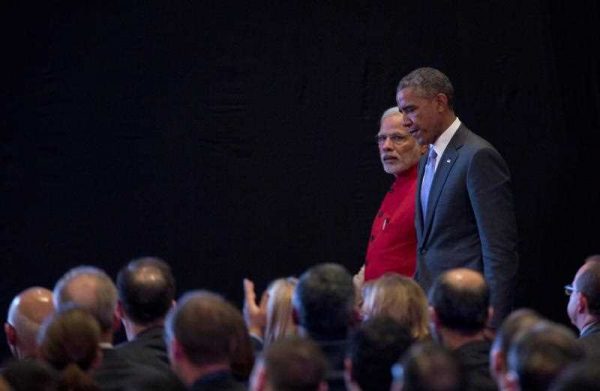Union Minister of Commerce and Industry, Nirmala Sitharaman, has hinted at India’s position on the agreement. During her address to the Confederation of Indian Industry (CII) Partnership Summit, Sitharaman reassured industry stakeholders: ‘There is nothing to worry about the adverse impact of TPP on India. We have taken necessary steps to boost India’s trade and investment in the wake of emerging new trade architecture’.
At another CII event, the Commerce Minister said the TPP would affect India’s export sectors and, given the TPP’s higher standards compared to WTO norms, India should consider improving its own standards.
The TPP has been the basis of the Obama administration’s economic policy towards the Asia Pacific. Improving US access to Southeast Asian markets is central to this agenda. According to US Trade Representative (USTR) Michael Froman and President Obama, this would create new jobs in the United States while improving labour and environmental standards across both sides of the Pacific Rim.
The USTR argues that such trade will help, inter alia, in facilitating cross-border trade and opening up domestic markets, eventually integrating regional economies across the Asia Pacific beyond the Trans-Pacific border.
Despite having been invited by the United States to discuss the TPP during Vice President Joe Biden’s visit to India in July 2013, India has so far not sought TPP membership, though it is closely watching international developments.
India may incur considerable trade diversion costs from not joining the TPP. Peter Petri and Michael Plummer estimate that India’s exclusion could result in a trade loss of US$2.7 billion per year, which would only rise with an increase in the number of member countries. A study by C. Fred Bergsten estimated an annual export loss of up to US$50 billion if China and the rest of APEC form a second stage of the TPP that still excludes India, though this seems a distant possibility. According to World Integrated Trade Solution statistics, 25 per cent of India’s exports went to TPP countries in 2014.
But since India has already signed free trade agreements (FTAs) with Japan and ASEAN, resulting in preferential or zero duty access for five TPP countries, its trade diversion risk may not be as severe as many expect.
Despite having signed 13 FTAs, India has failed to significantly improve its export base. At the same time, these FTAs have allowed greater access to Indian markets, leading to a significant rise in imports, a dip in Asian exports and increased trade deficits.
Many of these FTAs were signed for geopolitical rather than economic gains. India has arguably failed to reap significant trade benefits from the South Asian Free Trade Agreement, despite the advantages of similar consumer preferences and logistics. This is due to inadequate physical infrastructure, high levels of protectionism within the South Asian Association for Regional Cooperation countries and high barriers to foreign direct investment.
Working on FTA management is key for India both in handling existing FTAs and preparing for the TPP. Structural reforms with good trade policy would strengthen India’s FTA record by enhancing its exports with trade partners, bringing benefits to each of these countries. Such reforms should include the early imposition of a goods and services tax, subsidy reduction, reduction of non-tariff barriers as well as simplified land and labour laws.
India’s reform agenda can be guided by the trade rules outlined in the TPP and pursued by the United States, which are set to become a new global trade paradigm. This could help raise India’s share of global trade above its current level of 2.1 per cent.
From now until the TPP becomes operational, India should implement its own innovative way of doing business so as to minimise any potential losses. The ‘zero defect and zero effect’ manufacturing, part of the ‘Make in India’ initiative, is one recent positive step. Dubbed ‘ZED’, the program focuses on improving ease of doing business in India, ensuring the quality of export goods and minimising the manufacturing industry’s environmental impact. Expected to be launched in March 2016, ZED is a promising sign of things to come for India’s manufacturing industry and its place in the global economy.
India should look for new ways to manage existing FTAs, pursue reforms in key areas such as labour and land acquisition, and take steps towards becoming a global manufacturing hub. If India follows this path and improves trade on its own terms, not only will it be ready for the TPP, but it will play an increasingly central role in international trade for years to come.
Manish Vaid is a Junior Fellow at Observer Research Foundation (ORF), New Delhi, India.
Tridivesh Singh Maini is a Senior Research Associate at Jindal School of International Affairs, Sonepat, India. He was a SAV Visiting Fellow, Winter 2016 at the Stimson Center, Washington DC.


There are many good suggestions in this relatively brief analysis. It will be interesting to see if/how many of these can be implemented in the coming years.
So many write and talk of India’s untapped potential. Can Modi and his team actually dot enough i’s and cross enough t’s to nudge India towards greater prosperity while taking better care of its environment and public health? In such a large and diverse country it is no small series of tasks indeed!